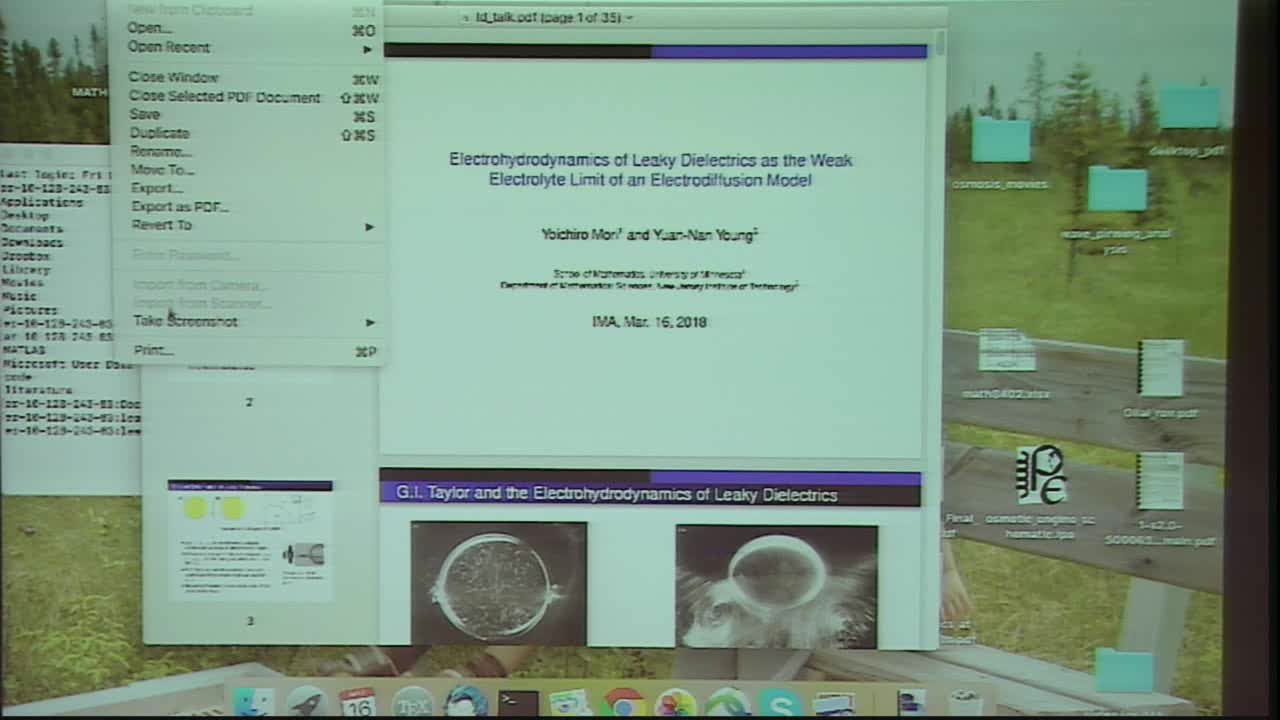Electrohydrodynamics of Leaky Dielectrics as the Weak Electrolyte Limit of an Electrodiffusion Model
Presenter
March 16, 2018
Abstract
The Taylor-Melcher (TM) model is the standard model for describing the dynamics of poorly conducting leaky dielectric fluids under an electric field. The TM model treats the fluid as an Ohmic conductor, without modeling ion dynamics. On the other hand, electrodiffusion models, which have been successful in describing electrokinetic phenomena, incorporates ionic concentration dynamics. Mathematical reconciliation of the electrodiffusion picture and the TM model has been a major issue
for electrohydrodynamic theory. Here, we derive the TM model from an electrodiffusion model in which we explicitly model the electrochemistry of ion dissociation. We introduce salt dissociation reaction terms in the bulk electrodiffusion equation and take the limit in which the salt dissociation is weak; the assumption of weak dissociation corresponds to the fact that the TM model describes poor conductors. Together with the assumption that the Debye length is small, we derive the TM model with or without the surface charge convection term depending upon the scaling of relevant dimensionless parameters. An important quantity that emerges is the Galvani potential (GP), the jump in voltage across the liquid-liquid interface; the GP arises as a natural consequence of the interfacial boundary conditions for the ionic concentrations, and may be absent under certain parametric conditions. When the GP is absent, we recover the TM model. In the presence of a non-zero GP our model predicts that the liquid droplet will drift under an electric field, the velocity of which is computed explicitly to leading order. This is joint work with Yuan-Nan Young of NJIT.
